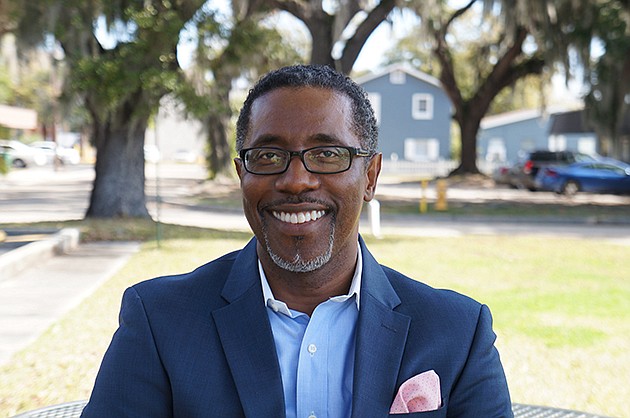Executive Summary
Company. Dynamic Dental Partners Group Industry. Dental practice management, health care Key. Well-run firms can produce big returns.
Opportunities are so ripe in the dental practice management industry that it's even attracted the likes of a Norwegian knight.
That comes in the form of Sarasota-based Sebring Software, where annual revenues have doubled, from $9.2 million in 2013 to $20 million last year. Sebring's President and CEO is Leif Andersen, named a Knight of the First Order in 2002 by His Majesty King Harald V of Norway. Andersen, whose first name is pronounced life, also founded a sonar technology business he ultimately sold to Toshiba before he and some partners launched Sebring in 2007.
Dynamic Dental Partners Group, based in Palmetto and founded in 2008, has taken that growth track even farther. Revenues there have grown 1,384% since 2012, from $3.1 million to $46 million last year. The number of dental practices it owns and manages has grown from two-dozen to about 40.
Company leaders are just as bullish about the future.
“We're in this for the long term and looking to double our growth in both revenues and number of practices,” says DDPG President and COO Marvin Terrell. “We have a number of opportunities in our funnel now for acquisition.”
 DDPG is part of a larger trend in the $130 billion dentistry field, with more dentists opting to forgo the solo practice route in favor of participating in a group practice. Commonly called dental service or support organizations (DSOs), companies such as DDPG take over back-office functions such as payroll, billing and human resources; offer economies of scale when it comes to things such as equipment and supplies; and allow dentists to focus on patients and their pearly whites.
DDPG is part of a larger trend in the $130 billion dentistry field, with more dentists opting to forgo the solo practice route in favor of participating in a group practice. Commonly called dental service or support organizations (DSOs), companies such as DDPG take over back-office functions such as payroll, billing and human resources; offer economies of scale when it comes to things such as equipment and supplies; and allow dentists to focus on patients and their pearly whites.
This model is attractive to dentists, and it's also a magnet for private equity firms. Both Dynamic Dental Partners Group and Sebring have received equity from outside entities — for good reason. Large dental practice management firms, according to a 2014 report from Investor Group Services, a Boston-based data-analysis firm, have sold at multiples of seven times earnings or higher. Large, well-run dental practice management firms, the report adds, have margins of at least 20%.
“Essentially all the doctors have to do is come in and practice dentistry,” says Terrell. “And that's what a lot of doctors want.”
A typical solo practitioner, according to DDPG, spends about 63% of his or her time treating patients. That number rises to 90% when they affiliate with DDPG.
Group-practice models are nothing new in fields such as medicine, optometry and pharmaceuticals. But they're starting to take hold in dentistry. According to the Association of Dental Support Organizations, 69% of dentists were solo practitioners in 2010, down from 76% in 2006. And group practices — many of which are supported by DSOs — have increased by 25% from 2009 to 2011.
DDPG has positioned itself to help drive and support the changes in the industry. It works often with dentists who are nearing retirement and in need of an exit strategy. Partnering with the company can be an ideal solution for these doctors. DDPG acquires the practice, the dentist can keep working and draw a salary for a period of time, and DDPG finds another dentist to take over the practice when the time for a transition comes.
The company's impressive growth landed it at the No. 14 spot on the 2014 Inc. 500, a ranking of the country's fastest-growing private companies. And it's got plenty of investment capital to work with in the days ahead, thanks to its partnership with private equity firm Detroit-based Huron Capital Partners. “We have a substantial amount of financial backing behind us to continue growing our business,” says Terrell.
Reasons to Smile
A third dental practice management firm in the Sarasota-Manatee firm in the Sarasota-Manatee region that's grown rapidly is Lakewood Ranch-based Dental Care Alliance. The firm, around since the early 1990s, supports about 160 affiliate locations in eight states and has seen its growth come in stages over the years.
It grew quickly during the 1990s, went public and then went private again in 2001. It has doubled in size since 2011 under an aggressive growth plan, says co-CEO and COO Mitch Olan.
DCA's two decades in the business have given it good insight into the changing needs and wants of dental practitioners. Most dental students today graduate with $150,000 to $300,000 worth of loans. Many don't want to go into further debt to open their own practice, and those who do can have difficulty getting money from a bank.
“We mitigate some of the risk of being out there on your own,” says Olan. “With the size of our organization, we can negotiate better prices with vendors, better reimbursement contracts and better benefit packages for employees...things that if not watched closely can very quickly run a practice in the wrong direction.”
In addition, about half of dental school students are now female, a demographic Olan says is drawn to the DSO model. “A lot of them like the flexibility coming out of school to make a good living but not have to take everything home with them,” he says. “They want to have a work-life balance.”
DCA works with a variety of practices with different specialties and methods of operation. “We don't try to make every dental office the same as the next,” says Olan. “Our ability to take care of what happens behind the scenes is very similar from practice to practice, but how a practice positions itself in the community depends on the individual dentist.”
The company expects to see further growth and is currently taking over a 10,000-square-foot building next to its current headquarters, so it can add to its 130-member corporate staff.
“We'll be hiring in the coming months and years,” says Olan.
Sebring Software, through its dental practice management subsidiary Sebring Management, also expects some bites from the growth trend. The publicly traded Sarasota-based firm got into the dental practice management business in 2010 and now has 38 practices in Florida and Arizona in its portfolio.
“It's not unrealistic to say that we could be at $100 million in revenues in the next 12 to 24 months,” says L. Michael Andersen, Sebring's vice president of operations and Leif Andersen's son. “It depends on certain acquisitions we've targeted.”
Investors in Sebring include such companies as Wellington Shields & Co. and MidMarket Capital Partners. “We're frequently introduced to new parties who see a lot of value in this space,” says L. Michael Andersen. “Some of the parties are wanting to get into this space in which they haven't been before, which says a lot about the market.”
But with strong growth can come challenges, such as maintaining a level of consistency within the support organization itself and among the corporate cultures of its affiliate practices. Most other dental practice management firms face those same challenges.
Room to Grow
One way DDPG addresses those challenges is through what Terrell calls the three Ps: That's the company's people, its patients and how those two affect profits. Training, support and recognition are provided regularly for employees.
Dr. Alex Giannini and Dr. George Strickland, both with extensive experience establishing and developing dental practices, founded DDPG. Strickland is still the company's chief clinical officer, while Giannini was involved with business development before transitioning to solely serving on the company's board about six months ago. Terrell joined the firm in 2013 and draws on his background in finance and dental operation management and marketing.
DDPG partners with offices that offer lifetime dental care and has concentrated its efforts in Florida, Arizona and Virginia. Baby boomers make up a big chunk of the population in each state, a demographic in need of the services the company's affiliated offices provide. And more than 30% of the dentists who operate in those states are 55 or over, according to a 2013 report from the Pew Charitable Trusts. DDPG plans to keep expanding in these regions, but also watches for growth opportunities in other states.
Potential acquisitions go through a thorough vetting process. DDPG looks at things such as location, profitability and patient mix, along with whether the practice fits in with its lifetime care model. “No matter how profitable a practice may be,” says Terrell, “if it's not a philosophical alignment, then we'll pass.”
DDPG's corporate staff has grown from about 10 people to around 45 in the past few years. “But that number will be changing,” says Terrell. “We're interviewing to hire people now, because we're preparing for our next round of growth that we're about to embark upon.”


 DDPG is part of a larger trend in the $130 billion dentistry field, with more dentists opting to forgo the solo practice route in favor of participating in a group practice. Commonly called dental service or support organizations (DSOs), companies such as DDPG take over back-office functions such as payroll, billing and human resources; offer economies of scale when it comes to things such as equipment and supplies; and allow dentists to focus on patients and their pearly whites.
DDPG is part of a larger trend in the $130 billion dentistry field, with more dentists opting to forgo the solo practice route in favor of participating in a group practice. Commonly called dental service or support organizations (DSOs), companies such as DDPG take over back-office functions such as payroll, billing and human resources; offer economies of scale when it comes to things such as equipment and supplies; and allow dentists to focus on patients and their pearly whites.



